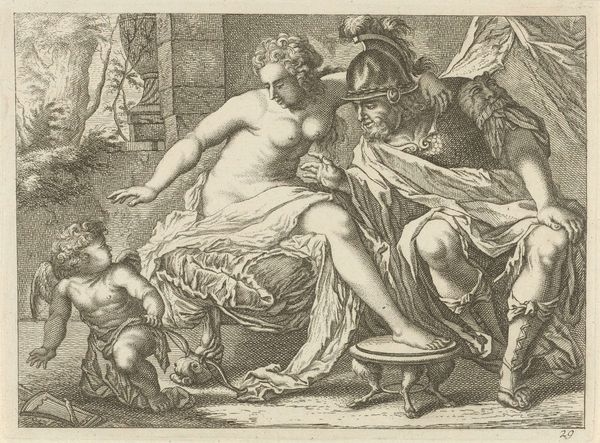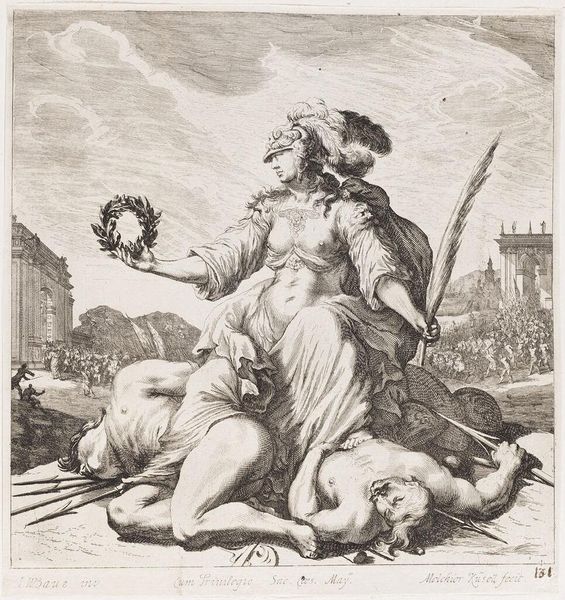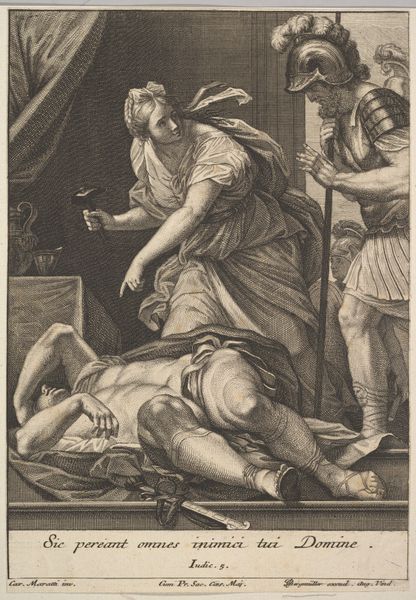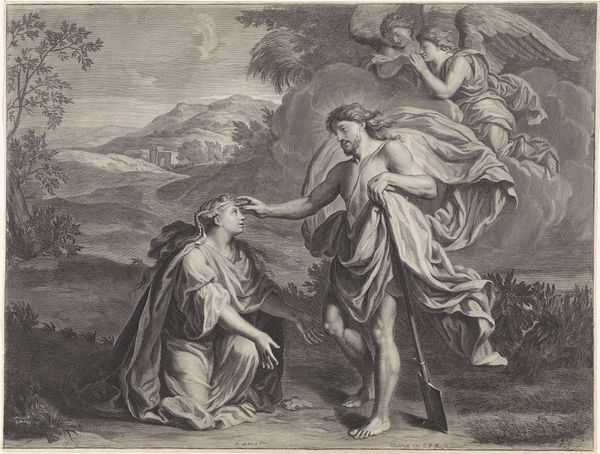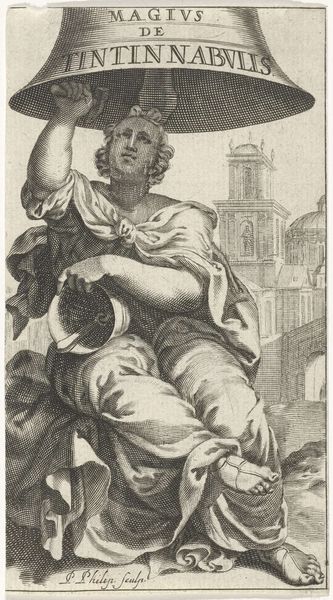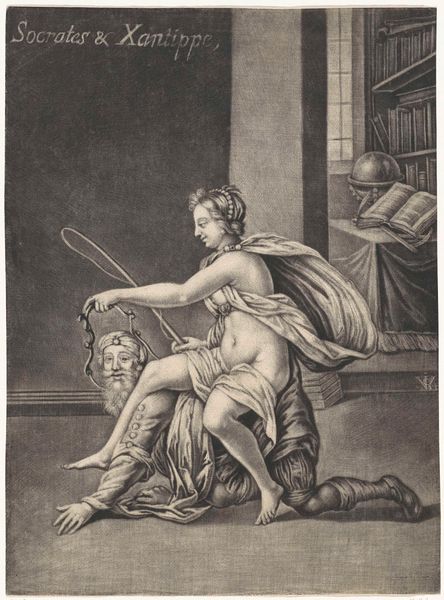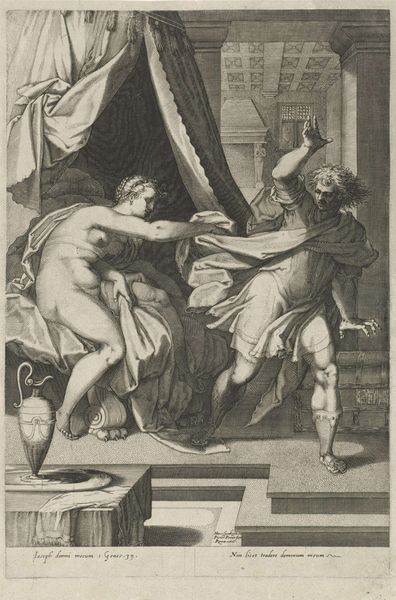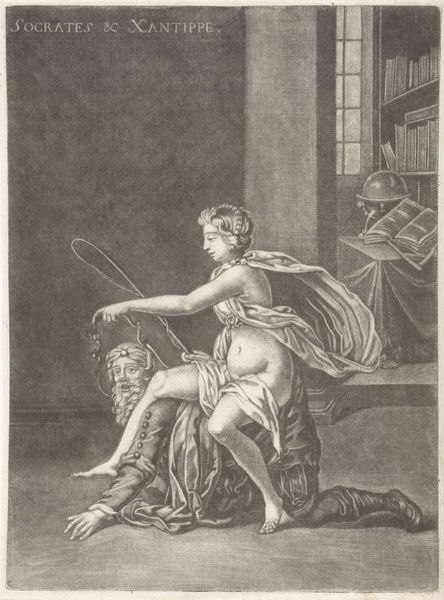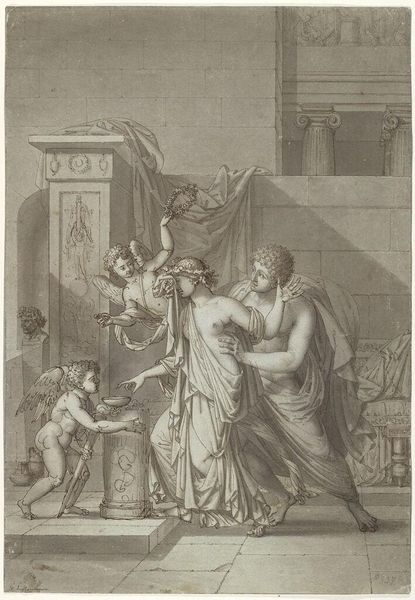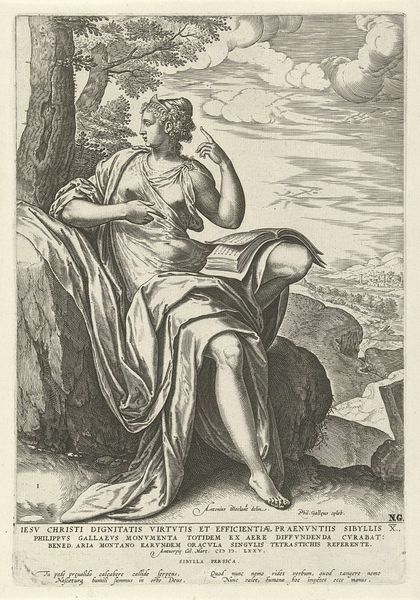
engraving
#
portrait
#
baroque
#
line
#
portrait drawing
#
history-painting
#
engraving
Dimensions: height 250 mm, width 174 mm
Copyright: Rijks Museum: Open Domain
Curator: Let's talk about "H. Maria Magdalena," an engraving by Pieter Schenk, created sometime between 1670 and 1713. You know, gazing upon it, I’m immediately struck by the melodrama of light and shadow! It feels almost theatrical. Editor: The melodrama, sure, but I am more interested in what these objects reveal. Look at the jewelry, the open box overflowing with worldly goods. It's less about personal angst and more about illustrating wealth and consumption, wouldn't you say? How this image relates to the social and economic status afforded by the patronage system. Curator: Absolutely, the excess is a key element here. The Baroque style lends itself to this, doesn't it? All that ornate detail, those heavy draperies. The material world seems poised to consume her, even as divine light shines down in almost mocking contrast. To me it’s the turning point, when worldly riches begin to be emptied of meaning for her, and divine intervention starts making her reevaluate. Editor: The technical craft itself is fascinating here; the painstaking labor required for engraving. You have the artist's hand literally reproducing, pixel by pixel—or should I say, line by line— the idea of Maria Magdalena's status through material depictions and what these precious objects could represent. But what about the circulation of the engraving itself? What did this level of artistry signify in terms of cultural production during that time? Curator: It's about availability and affordability for a start—engravings made art accessible to a wider audience, moving the image out of private collections and into homes. Even this moment of soul-searching became a commodity to be consumed. What gets me is how well it translates the inherent conflict. Look at her expression: such tangible suffering. Almost makes you want to chuck your own jewelry into the nearest river and renounce your worldly goods. Editor: The very act of creation, and the materials used—metal, ink, paper—connects it to other crafts and trades, like printing, merchanting, and selling these engravings on the market. These are less a study of repentance, in my view, than a case study in art production itself! Curator: I love that perspective! A timely reminder of all that is needed to create such art and image. For me though, it's still a potent image, grappling with themes of redemption and transformation. Editor: Indeed, and one very cleverly crafted for a wide audience during a specific cultural and historical moment!
Comments
No comments
Be the first to comment and join the conversation on the ultimate creative platform.
